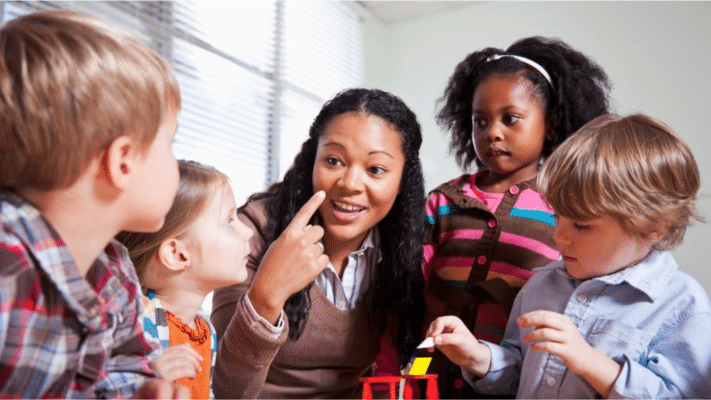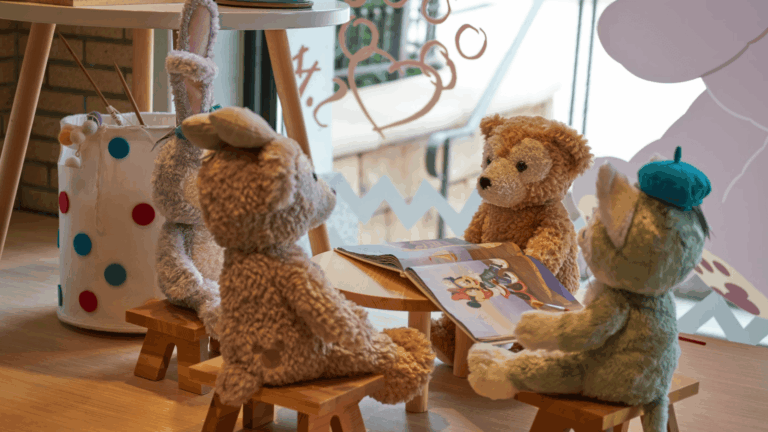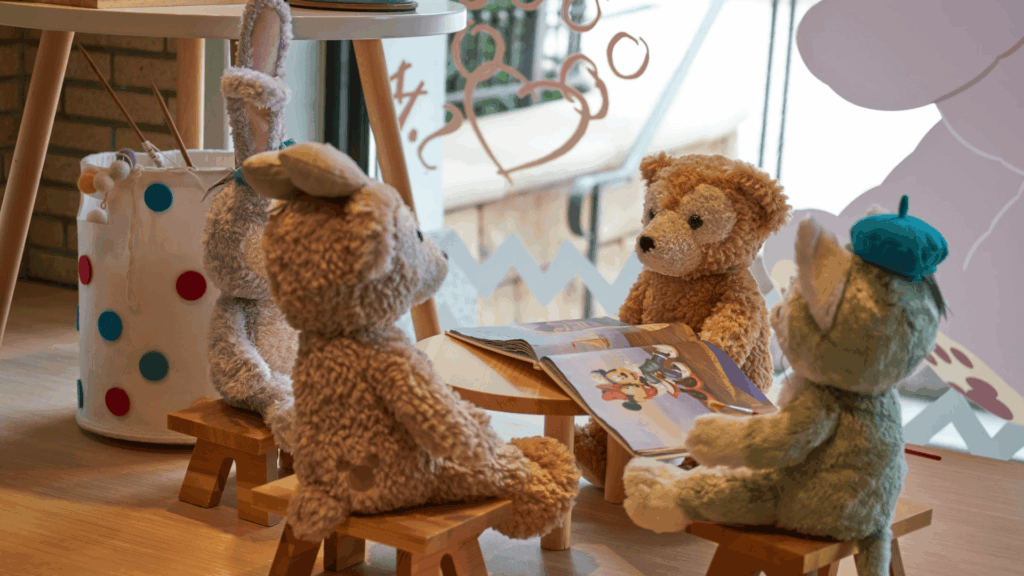Picture a room where strangers become friends, where silent struggles find a voice, and where healing happens not alone, but together.
Many group sessions fall flat because the activities feel forced or don’t match what participants really need to grow and heal. The right group therapy activities can convert a room full of hesitant individuals into a supportive community.
These carefully chosen exercises help people share their stories, practice new skills, and realize they’re not alone in their challenges.
From simple icebreakers that foster trust to more in-depth activities that help process emotions, the right activity can make all the difference in someone’s healing.
How Group Activities Help in Therapy
The goal of group therapy is to help individuals develop emotional awareness, enhance communication, and cultivate healthy coping skills in a safe and supportive environment.
Through structured group activities, such as emotion games, creative expression, or guided discussions, participants learn to share, listen, and reflect on their feelings and behaviors.
These activities encourage trust, empathy, and self-understanding, making therapy both engaging and meaningful.
Group therapy also promotes common goals such as building confidence, managing emotions, improving relationships, and learning how to handle challenges in everyday life.
It’s about healing together through play, conversation, and connection. The process helps people feel less alone while developing skills they can use outside the therapy room.
Group Therapy Activities For Kids
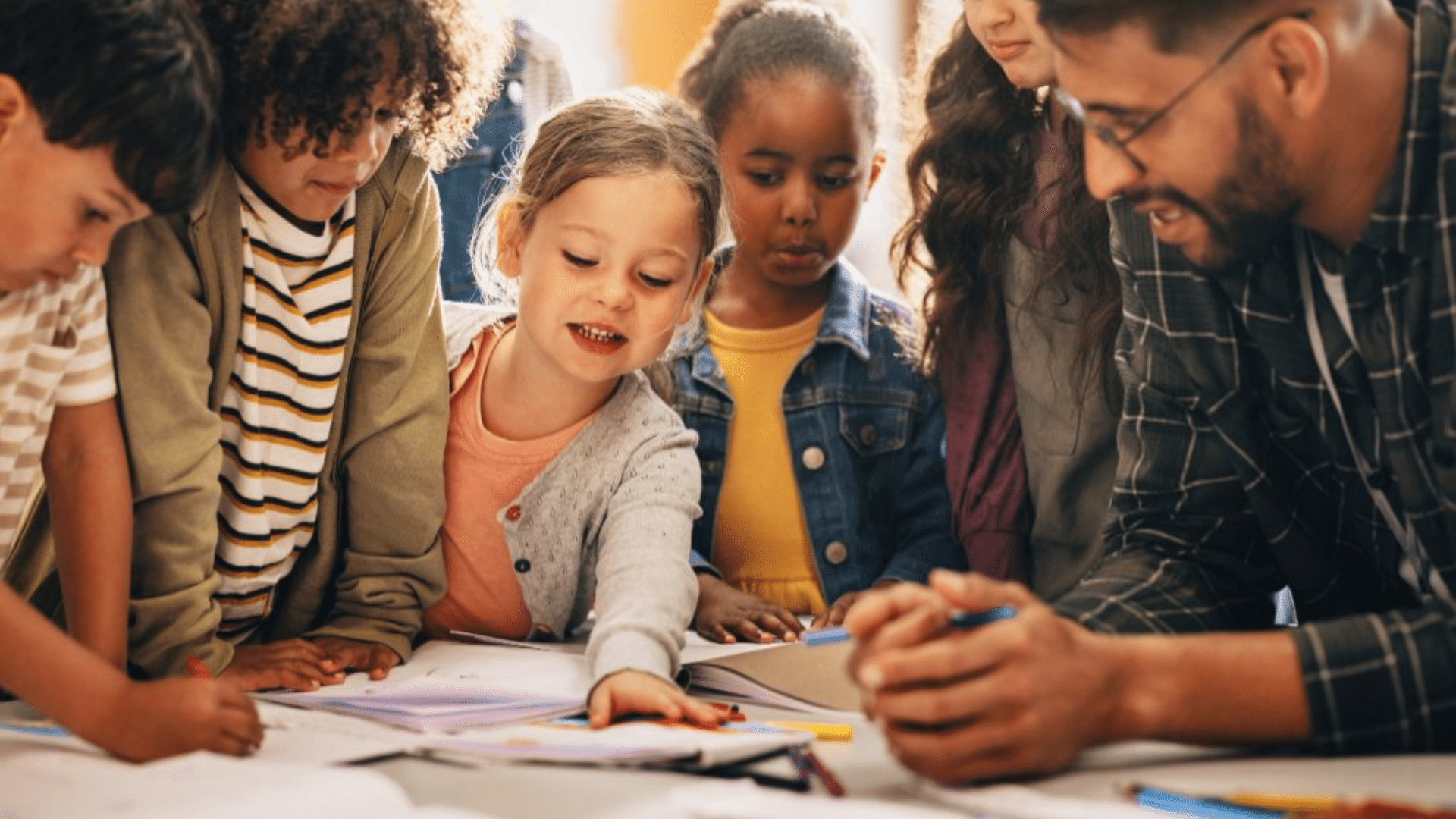
Fun, interactive activities designed to help children express emotions, build social skills, and develop healthy coping strategies in a group setting.
1. Feelings Charades
Children take turns acting out different emotions using only facial expressions and body language. Other group members guess which emotion is being portrayed.
This activity encourages participation from all children, even those who struggle with verbal expression.
Benefit: Enhances nonverbal communication and emotional intelligence.
2. Emotion Wheel Spin
Create a colorful wheel divided into sections with different emotions written on each part. Children spin the wheel and share a personal experience related to the emotion it lands on.
This structured approach helps shy children participate by giving them a specific prompt to respond to.
Benefit: Develops self-awareness and narrative skills.
3. Draw Your Day
Provide paper and crayons for children to illustrate significant moments from their day.
Encourage them to use different colors to represent various feelings they experienced. Children can then share their drawings with the group, explaining what happened and how they felt.
Benefit: Supports emotional processing and fine motor development.
4. Puppet Talk
Provide hand puppets or encourage children to make simple sock puppets. Children use these puppets to express feelings or work through challenging situations.
The puppet serves as a “safe” character that can say things the child might find difficult to convey directly.
Benefit: Improves emotional articulation and problem-solving skills.
5. Story Circle
Children sit in a circle and collaborate to create a story together. One child starts with a sentence, and each subsequent child adds the next line.
The story can take unexpected turns, encouraging creativity and teaching children to build on others’ ideas.
Benefit: Fosters collaborative communication and creativity.
6. Feelings Bingo
Create bingo cards with different emotions instead of numbers. As the facilitator calls out feelings, children mark off emotions they’ve experienced recently.
When someone gets bingo, they can share one of the emotions they’ve marked.
Benefit: Enhances emotional vocabulary and memory recall.
7. Ball Toss Talk
Children stand in a circle and toss a soft ball to each other. When someone catches the ball, they answer a feelings-related question or share something about their day.
This physical activity helps energetic children focus while creating opportunities for emotional sharing.
Benefit: Develops social turn-taking and emotional expression skills.
8. Emotion Mask Making
Provide paper plates, craft supplies, and materials for children to create masks representing different emotions. Once completed, children can wear their masks and act out scenarios or role-play situations.
This allows them to “try on” different emotional expressions safely.
Benefit: Strengthens emotional recognition and artistic expression.
9. Animal Feelings Game
Show pictures of various animals and discuss what emotions each animal might experience.
Children can share which animals they relate to when feeling certain emotions. This activity helps children understand that all living beings have feelings.
Benefit: Boosts empathy and critical thinking.
10. Friendship Chain
Provide strips of colored paper for children to write their names or positive words about their friends.
Link the strips together to create a chain that represents their group connections. Display the chain as a visual reminder of their supportive community.
Benefit: Reinforces social bonding and kindness.
11. Music Feelings
Play different types of music and ask children to identify what emotions the songs evoke.
Please encourage them to move their bodies or draw while listening to the music. Discuss how music can change our moods and help us process feelings.
Benefit: Promotes auditory-emotional awareness and reflection.
12. Mood Monsters
Children draw or create monsters that represent their big, overwhelming emotions, such as anger, sadness, or fear. Give each monster a name and a backstory.
This helps children externalize difficult feelings and see them as manageable rather than scary.
Benefit: Externalizes intense feelings and boosts creativity.
13. Safe vs. Unsafe
Present various images or scenarios and have children sort them into “safe” and “unsafe” categories. Discuss why certain situations feel safe or unsafe.
This activity helps children develop their internal safety radar and trust their instincts.
Benefit: Enhances decision-making and safety knowledge.
14. Feelings Sorting Cards
Create cards with facial expressions and separate cards with emotion words. Children match the facial expressions to the correct feeling words.
Start with basic emotions and gradually introduce more complex feelings as children’s vocabulary grows.
Benefit: Develops facial recognition and emotional literacy.
15. Color My Emotion
Give children paper and ask them to choose colors that represent how they’re feeling right now.
They can create abstract art, scribbles, or patterns using their preferred colors. Encourage them to explain their color choices to the group.
Benefit: Supports emotional identification and sensory connection.
16. Kindness Catcher
Help children make paper fortune tellers (cootie catchers) filled with kind actions instead of fortunes.
Children take turns opening the fortune teller and performing the kind action it reveals. This encourages prosocial behavior in a fun, game-like format.
Benefit: Promotes prosocial behavior and decision-making.
17. Emotion Walk
Set up different “stations” around the room, each representing a different emotion. Children walk to each station and demonstrate how that emotion looks and feels in their bodies.
This combines movement with emotional learning, catering to kinesthetic learners.
Benefit: Combines kinesthetic learning with emotional expression.
18. “Me” Collage
Provide magazines, scissors, and glue for children to create collages about themselves.
They can include pictures, words, and drawings that represent their interests, strengths, and identity. Share completed collages with the group to celebrate each child’s uniqueness.
Benefit: Strengthens self-concept and self-esteem.
19. Feelings Freeze Dance
Play upbeat music and encourage children to dance freely. When the music stops, call out an emotion and have children freeze in a pose that shows that feeling.
This energetic activity helps children connect emotions with body language.
Benefit: Builds emotional expression and body awareness.
20. Worry Box
Provide a decorated box and small pieces of paper for children to write or draw their worries.
They can fold up their fears and place them in the box. This ritual helps children symbolically release anxious thoughts and feel lighter.
Benefit: Encourages emotional regulation and stress relief.
21. Feelings Jenga
Write feelings-related questions on wooden blocks in a Jenga game. When children pull out a block, they answer the question written on it before placing it on top.
This adds emotional depth to a familiar game structure.
Benefit: Supports emotional disclosure and cognitive flexibility.
22. My Superpower
Ask each child to identify a personal strength or skill they possess and present it as their “superpower.”
They can create superhero names for themselves and explain how their superpower helps them and others. This reframes strengths in an exciting, empowering way.
Benefit: Builds confidence and positive self-identity.
23. Who’s in Your Circle?
Have children draw themselves in the center of a paper and add circles around themselves containing the names or pictures of people who support them.
Discuss how these people help them feel safe and loved during difficult times.
Benefit: Strengthens understanding of social support systems.
24. Emotion Memory Game
Create pairs of cards showing the same facial expressions and play the memory game rules.
Children flip over two cards at a time, trying to find matching emotional expressions. When they find a match, they can act out that emotion or share when they last felt that way.
Benefit: Enhances facial-emotion matching and cognitive skills.
25. Happiness Hunt
Give children a few minutes to look around the room and identify objects, people, or things that make them feel happy.
They can collect small items or make a list. Each child shares their findings and explains why these things bring them joy.
Benefit: Encourages mindfulness and gratitude.
Group Therapy Activities For Teens
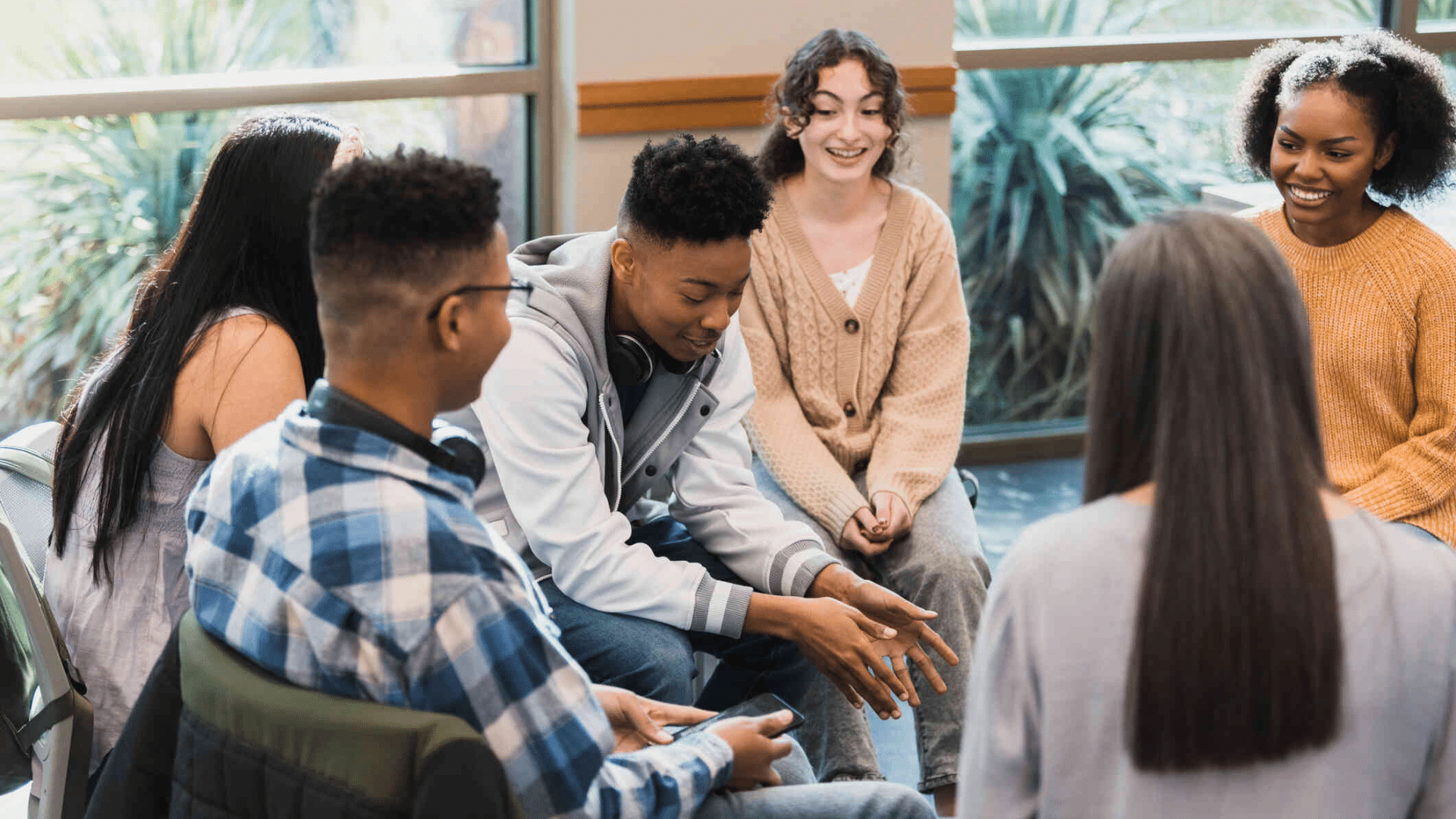
Engaging activities tailored for teenagers that focus on identity building, peer relationships, and emotional regulation.
These exercises help teens process complex feelings, build confidence, and develop communication skills with their peers.
26. Identity Collage
Create a visual representation of yourself by combining photographs, magazine cutouts, words, and meaningful symbols on a poster board or canvas.
Participants can include images that represent their hobbies, dreams, cultural background, family, and personal values.
This hands-on creative process allows teens to explore different aspects of their personality and identity in a non-verbal way.
Benefit: Supports adolescent identity exploration, cultural awareness, and self-expression.
27. Journaling Circle
Participants write privately about a specific prompt or topic provided by the facilitator, then have the option to share their thoughts with the group.
The writing time allows for personal reflection while the sharing component builds community connection.
Topics can range from everyday experiences to more profound emotional themes, depending on the group’s comfort level.
Benefit: Facilitates emotional processing, peer empathy, and reflective thinking in teens.
28. Music Share
Each participant selects a meaningful song and presents it to the group, explaining the personal significance, memories associated with it, or the emotions it evokes.
This activity taps into the powerful connection between music and emotion that resonates strongly with adolescents.
Benefit: Promotes emotional articulation and social connection through music preferences.
29. Goal Ladder
Participants draw or create a ladder diagram with their ultimate goal at the top and break it down into smaller, achievable steps on each rung.
This visual tool helps teens understand that achieving big dreams requires incremental progress and careful planning. Each step should be specific and measurable to create a realistic pathway forward.
Benefit: Encourages realistic planning and motivation during goal-setting phases in adolescence.
30. Who Am I Game
Each person writes an interesting or unique fact about themselves on a piece of paper, and the group tries to match facts with individuals. This icebreaker activity creates opportunities for participants to share surprising information about themselves.
The guessing element adds fun while helping group members learn unexpected details about each other.
Benefit: Upgrades group cohesion and self-awareness in identity-forming years.
31. Stress Ball Craft
Participants create their stress balls using materials such as balloons, rice, or flour while discussing various healthy coping mechanisms for managing stress and anxiety.
The hands-on crafting process itself can be therapeutic and calming. Once completed, teens have a tangible tool they can use when feeling overwhelmed.
Benefit: Builds sensory-based coping tools for stress and anxiety management.
32. Compliment Circle
Group members sit in a circle and each person offers a genuine, specific compliment to another participant, ensuring everyone receives positive feedback.
The compliments should focus on character traits, actions, or qualities rather than just appearance. This structured approach ensures no one is left out and creates a supportive group atmosphere.
Benefit: Improves peer relationships and nurtures positive self-esteem.
33. Feelings Sculpting (Clay)
Participants use clay or playdough to create three-dimensional representations of their current emotions or internal experiences.
The tactile nature of clay work can help teens who struggle with verbal expression to communicate their feelings.
Benefit: Supports kinesthetic emotional expression and self-awareness.
34. Photo Talk
Each participant brings a meaningful photograph and shares the story behind it, including why it’s significant and what emotions or memories it evokes.
The photo serves as a conversation starter and memory prompt for deeper storytelling. This activity helps teens practice narrative skills while sharing critical personal experiences.
Benefit: Facilitates autobiographical memory and emotional sharing in teens.
35. Strength Shields
Participants design and decorate a shield that visually represents their personal strengths, core values, and positive qualities. They can use symbols, words, colors, or images that reflect what makes them strong and unique.
The shield metaphor emphasizes protection and empowerment through self-knowledge.
Benefit: Builds confidence and fosters a positive sense of identity.
36. Social Media Check-In
Group members discuss their relationships with social media platforms, sharing both the positive and negative impacts on their moods, self-images, and daily lives.
This conversation can include strategies for healthy social media use and recognizing when online interactions become harmful.
Benefit: Encourages digital self-awareness and analysis of emotional impact.
37. Letter to Younger Self
Participants write a compassionate letter to themselves at a younger age, offering advice, encouragement, or simply acknowledging past struggles.
This reflective writing exercise helps teens recognize their personal growth and development over time. The letter format creates emotional distance that can make self-compassion easier to access.
Benefit: Promotes reflection, awareness of growth, and emotional integration.
38. Emotion Cards Roleplay
Participants draw cards with different emotions written on them and then act out scenarios or demonstrate how that feeling might look and sound.
This interactive activity helps teens recognize their own and others’ emotional expressions. The roleplay element adds engagement while building emotional vocabulary through action.
Benefit: Strengthens emotional literacy and social role flexibility.
39. Stress Web
Participants sit in a circle and pass a ball of yarn while sharing a current stressor, creating a visual web that shows how stress connects everyone.
The physical web illustrates that stress is a universal phenomenon and that support systems are interconnected.
Ultimately, the group can discuss how the web represents both shared struggles and mutual support.
Benefit: Creates emotional validation and shared understanding.
40. If I Were President
Each participant shares one specific change they would make if they held the highest office in the country and explains their reasoning.
This hypothetical scenario encourages teens to think about social issues, problem-solving, and their values regarding fairness and justice.
The activity can spark meaningful discussions about civic responsibility and social change.
Benefit: Fosters critical thinking, leadership identity, and civic engagement.
41. Wheel of Coping Skills
Create a spinning wheel divided into sections, each containing a different coping strategy. Participants take turns spinning to discuss or demonstrate the selected technique.
This gamified approach makes learning about emotional regulation more engaging and memorable. The variety ensures exposure to multiple strategies that different teens might find helpful.
Benefit: Builds emotional toolkit and promotes proactive self-regulation.
42. Problem-Solution Map
Participants choose a current challenge they’re facing and create a visual map, with the problem at the center and potential solutions branching out around it.
This structured approach helps break down overwhelming issues into manageable components. The visual format can reveal new perspectives and solution pathways that weren’t immediately obvious.
Benefit: Develops executive function and resilience in challenge resolution.
43. Fake News Game
Participants share a common myth, misconception, or piece of misinformation they’ve encountered, then present the accurate facts and discuss how to identify unreliable sources.
This activity builds media literacy skills that are crucial in the digital age. The game format makes learning about information verification an engaging and memorable experience.
Benefit: Strengthens critical thinking and digital literacy.
44. Trust Walk (blindfolded)
Participants pair up with one person wearing a blindfold while their partner guides them safely through a designated space using only verbal directions and gentle touch.
This exercise requires clear communication, patience, and mutual dependence. Roles are then switched so that both participants experience being both the guide and the guided.
Benefit: Builds trust, non-verbal communication, and group cohesion.
45. Change Timeline
Participants create a visual timeline that marks significant life changes, transitions, or milestones, and reflect on the emotions associated with each event. This activity helps teens recognize patterns in how they handle change and identify sources of resilience.
The timeline format provides structure for processing complex life experiences.
Benefit: Helps teens process transitions and strengthens emotional insight.
46. Who Inspires You?
Each participant shares a story about a person they admire, whether famous, fictional, or from their own personal life, and explains the specific qualities that make this person inspirational.
The discussion can explore how these admired traits might be developed in themselves. This activity encourages positive role modeling and aspiration.
Benefit: Encourages aspirational thinking and identity modeling.
47. Assertive vs. Passive
Participants practice responding to common scenarios using passive, aggressive, and assertive communication styles to understand the differences and effectiveness of each approach.
Role-playing various situations helps teens recognize their default communication patterns. The practice builds skills for standing up for themselves while respecting others.
Benefit: Develops healthy communication and self-advocacy skills.
48. Bucket List Brainstorm
Participants create lists of experiences, goals, and adventures they hope to pursue throughout their lives, from small everyday wishes to major lifetime dreams.
This forward-looking activity encourages teens to think beyond immediate concerns and consider their long-term aspirations.
Sharing lists can inspire new ideas and reveal common interests.
Benefit: Stimulates future orientation and personal ambition.
49. Media Moods
Participants discuss a recent movie, TV show, book, or video they consumed and analyze how it affected their emotions, thoughts, or perspectives.
This activity develops critical media literacy while helping teens recognize how entertainment influences their internal states. The discussion can include strategies for choosing media that support positive mental health.
Benefit: Enhances emotional reflection and narrative interpretation.
50. “Dear Future Me” Letter
Participants write letters to themselves five years in the future, sharing current hopes, fears, goals, and advice they want to remember.
This time-capsule approach encourages forward-thinking and helps teens articulate their current priorities and dreams. The letters can be sealed and returned to participants at a later date if desired.
Benefit: Encourages goal setting and future-oriented thinking.
Group Therapy Activities For Adults

Structured activities that help adults process life challenges, improve relationships, and develop effective coping strategies through group support and shared experiences.
51. Guided Meditation Share
Participants engage in a brief guided meditation session focused on breathing or body awareness, then share their experiences with the group.
This combination of mindful practice and verbal processing helps normalize meditation while building community connection.
The discussion can include any thoughts, feelings, or physical sensations that arose during the practice.
Benefit: Improves mindfulness, stress reduction, and present-moment awareness in adults.
52. Life Timeline
Participants create a visual representation of their life journey, marking significant milestones, transitions, and achievements from birth to present.
This retrospective exercise helps adults see patterns and connections between past experiences and current circumstances.
The timeline format provides structure for processing complex life experiences and recognizing personal growth.
Benefit: Encourages life review and self-reflection, aiding identity coherence in adults.
53. Values Clarification Cards
Using cards with different values written on them, participants sort and rank them according to personal importance. They discuss how these top values currently show up in their daily lives and identify areas of misalignment.
This structured approach clarifies what truly matters when making difficult decisions.
Benefit: Enhances decision-making and alignment with personal values, promoting psychological flexibility.
54. Coping Toolbox
Participants brainstorm and compile a comprehensive list of healthy strategies for managing stress, difficult emotions, or challenging situations.
The “toolbox” can be organized by categories like physical activities, mental strategies, and social supports. Having a prepared collection of coping skills increases confidence in handling future difficulties.
Benefit: Strengthens resilience and proactive emotional regulation strategies in adults.
55. Gratitude Journaling
Participants write about specific things they’re thankful for, focusing on details and explaining why each item holds meaning.
This practice can include daily occurrences, relationships, personal qualities, or life circumstances. Regular gratitude writing has been shown to improve mood and overall life satisfaction.
Benefit: Increases emotional well-being and reduces depressive symptoms through the practice of gratitude.
56. Emotion Mask (Advanced)
Participants create a two-sided mask representing the emotions they show publicly versus those they keep private.
One side displays the face they present to the world, while the other reveals hidden feelings or authentic emotions. This artistic exercise facilitates deeper conversations about emotional authenticity and social expectations.
Benefit: Facilitates self-exploration and emotional authenticity in adult relationships.
57. Mindful Coloring
Participants engage in focused coloring activities while paying attention to the present moment, colors, and physical sensations.
The repetitive, creative action helps quiet mental chatter and promotes relaxation. This meditative art form combines creativity with mindfulness practice in an accessible way.
Benefit: Enhances mindfulness and lowers anxiety through focused creative activity.
58. Personal Boundaries Map
Participants create a visual map outlining their limits in various areas, including relationships, work, and self-care. They identify where boundaries are strong, weak, or missing entirely in their current life.
This exercise helps clarify what feels comfortable and what changes might improve overall well-being.
Benefit: Improves self-advocacy and clarity in interpersonal boundaries.
59. Role Reversal
Participants act out a personal conflict or difficult conversation from the other person’s perspective. This exercise requires stepping into someone else’s shoes to understand their motivations and feelings.
The role-playing format offers a safe environment for practicing real-world empathy and communication skills.
Benefit: Builds empathy and perspective-taking for healthier adult communication.
60. Anger Iceberg
Participants draw an iceberg with anger at the tip and explore what underlying emotions might be hidden beneath the surface.
Common hidden feelings include hurt, fear, disappointment, or feeling misunderstood. This visual metaphor helps identify the root causes of anger, facilitating more effective emotional processing.
Benefit: Helps adults identify root emotions behind anger and improve self-regulation.
61. Self-Talk Rewrite
Participants identify negative internal messages and practice rewriting them into compassionate, realistic statements.
They learn to catch self-critical thoughts and transform them into supportive inner dialogue. This cognitive exercise builds skills for ongoing self-compassion and emotional well-being.
Benefit: Uses cognitive restructuring to reduce self-criticism and increase self-compassion.
62. Empathy Circle
Participants take turns sharing while others listen without offering advice, solutions, or judgments. The focus is on truly hearing and understanding each person’s experience without trying to fix anything.
This structured listening practice builds a deeper connection and emotional intelligence.
Benefit: Strengthens emotional intelligence and builds relational trust among adults.
63. Fear Ladder
Participants identify specific fears and rank them from least to most anxiety-provoking, then brainstorm small steps to face each fear gradually.
This systematic approach breaks overwhelming concerns into manageable pieces. The ladder format provides a clear pathway for building courage and confidence.
Benefit: Supports exposure-based coping for anxiety reduction in adults.
64. Relationship Tree
Participants draw their essential relationships as a tree, with different branches representing family, friends, colleagues, and other significant connections.
They can note the strength and quality of each relationship using different colors or symbols. This visual representation helps assess social support and relationship satisfaction.
Benefit: Visualizes support systems and strengthens relational self-awareness.
65. Conflict Mapping
Participants reflect on past conflicts and map out how they were handled, including what worked well and what could be improved. They identify patterns in their conflict style and explore alternative approaches for future disagreements.
This analytical exercise builds awareness of personal communication patterns.
Benefit: Enhances conflict resolution skills and insight into communication patterns.
66. Loss Timeline
Participants create a timeline marking significant losses in their lives, including deaths, relationship endings, job changes, or other meaningful transitions.
They reflect on how each loss affected them and what meaning or growth emerged over time. This structured approach facilitates the processing and integration of grief.
Benefit: Facilitates grief processing and meaning-making after loss.
67. Support Network Web
Participants identify people they can turn to for various types of support, creating a visual representation of emotional, practical, and social connections.
They map out who they call for various needs and identify gaps in their support system. This exercise increases awareness of available resources during difficult times.
Benefit: Increases perceived social support and emotional resilience.
68. Letter I’ll Never Send
Participants write a heartfelt letter to someone with whom they have unresolved feelings, knowing the letter will not be sent.
This exercise allows for complete emotional expression without concern for the other person’s reaction. The writing process can provide closure and clarity about complex relationships.
Benefit: Allows emotional expression and closure in unresolved adult relationships.
69. I Am From Poem
Participants use a structured template to write a poem exploring their cultural background, family traditions, and formative experiences.
The format provides prompts about childhood memories, family sayings, and significant places that shaped their identity. This creative exercise celebrates personal history and cultural heritage.
Benefit: Enhances cultural and personal identity awareness through narrative expression.
70. Habits Check-in
Participants honestly assess their daily routines and behaviors, identifying which habits support their well-being and which might be harmful.
They discuss strategies for maintaining positive habits and changing problematic ones. This structured self-evaluation promotes awareness and motivation for behavioral change.
Benefit: Promotes behavior change and self-regulation in adult routines.
71. Mind-Body Scan
Participants systematically focus on different parts of their body while noticing physical sensations and any emotions that arise.
This practice enhances awareness of how emotions manifest physically and where tension is stored in the body. The exercise builds skills for recognizing emotional states through bodily cues.
Benefit: Increases interoceptive awareness and emotional regulation.
72. Identity Masks
Participants explore the difference between how they see themselves and how they believe others perceive them by creating contrasting visual representations.
This exercise examines the distinction between authentic self-expression and social personas and expectations. The comparison can reveal areas where participants feel misunderstood or inauthentic.
Benefit: Encourages exploration of authentic self and social perception.
73. Resilience River
Participants map their life as a river, marking turbulent periods as rapids and peaceful times as calm waters, noting how they navigated each section.
They identify personal strengths and resources that helped them through difficult times. This metaphorical exercise reinforces recognition of individual resilience and coping abilities.
Benefit: Reinforces coping strategies and personal growth after adversity.
74. Mirror Talk
Participants practice saying positive affirmations and kind statements to themselves while looking in a mirror.
This exercise may feel uncomfortable initially, but it helps build comfort with self-acceptance and positive self-regard. The mirror creates accountability and helps internalize supportive self-talk.
Benefit: Builds self-esteem and counters negative self-beliefs through affirmation.
75. Hope Jar
Participants write hopeful thoughts, future goals, or positive possibilities on small pieces of paper and collect them in a decorated jar.
During difficult times, they can draw from the jar for encouragement and perspective. This tangible collection of hope serves as a resource for maintaining optimism.
Benefit: Cultivates optimism and future-focused thinking.
The Bottom Line
Group therapy activities prove that healing doesn’t have to happen in isolation. When people come together to share, listen, and grow, something powerful happens.
These group therapy activities offer practical tools that therapists, counselors, and group leaders can use to create meaningful connections and positive change.
From kids learning to name their feelings to adults building stronger relationships, these activities make therapy accessible and engaging.
Which activity resonates most with your group? Share your experiences in the comments below!


